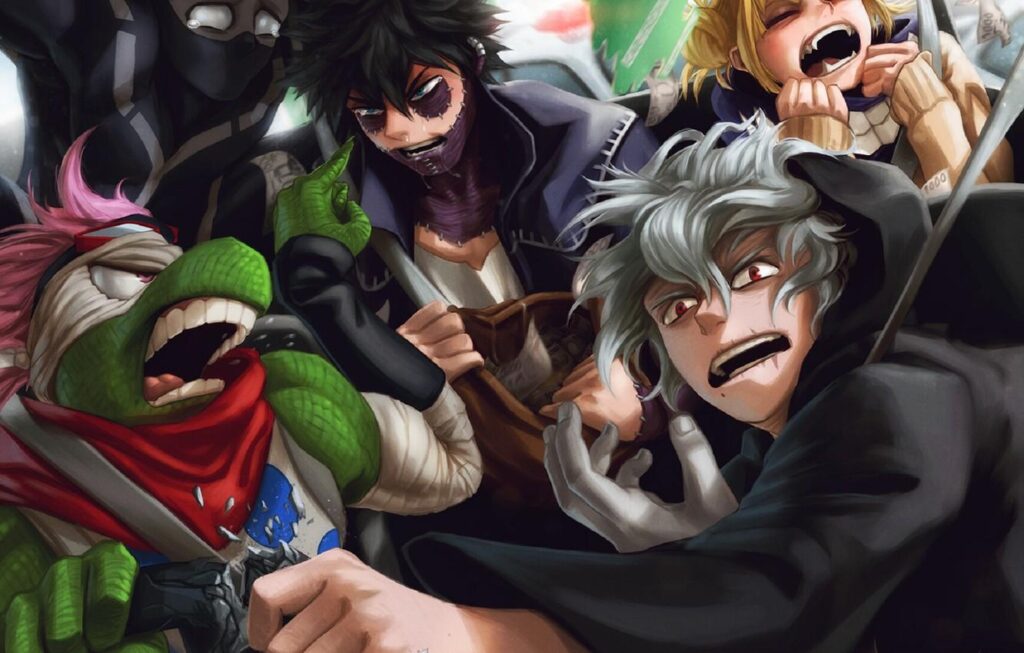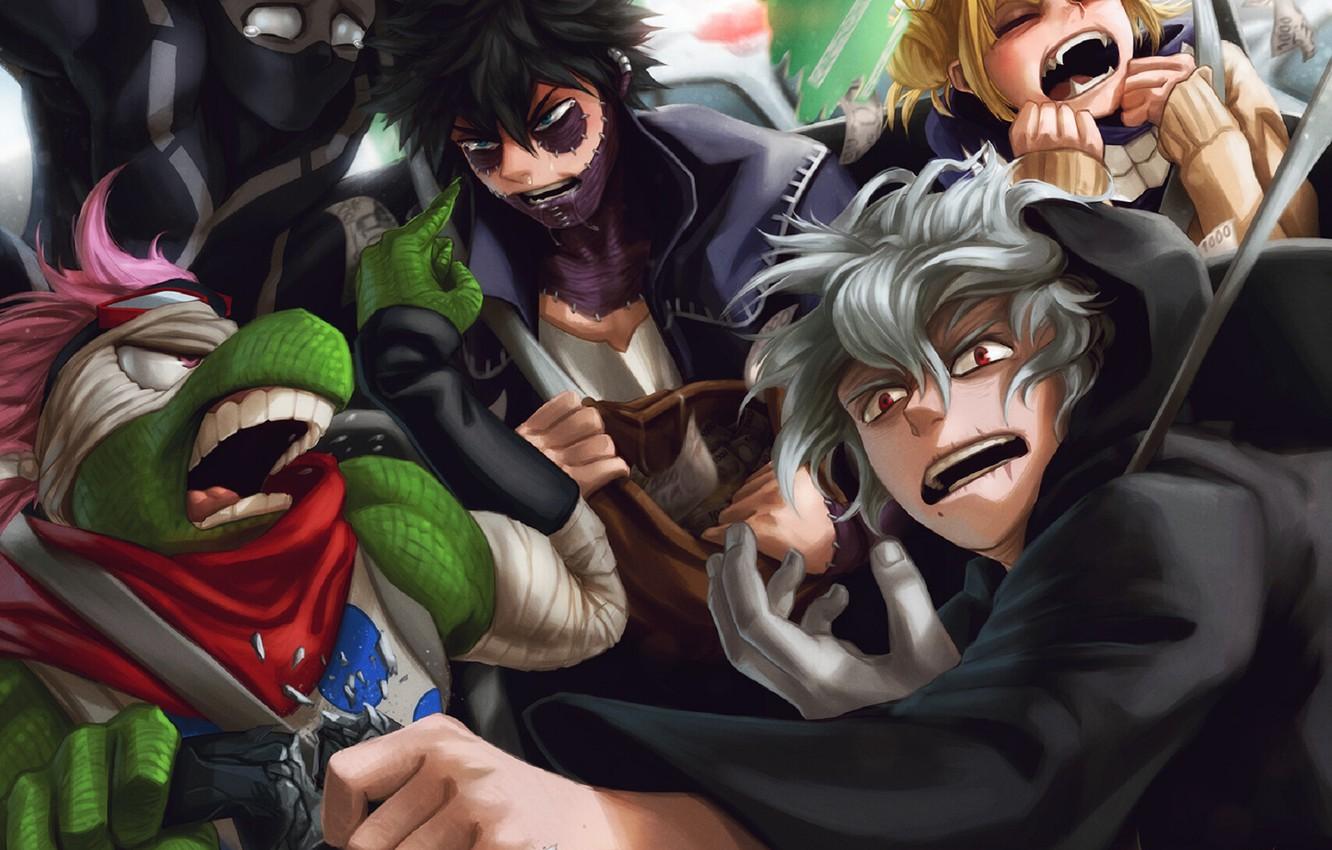
The Complex Morality of Villains in My Hero Academia
My Hero Academia, a popular anime and manga series, is renowned for its captivating storyline, dynamic characters, and exploration of superhero tropes. While the series prominently features heroes striving for justice, it also delves into the complexities of its villains, offering a nuanced perspective on their motivations and the societal factors that contribute to their descent into villainy. Understanding these villains is crucial to appreciating the depth and thematic richness of My Hero Academia.
Exploring the Motivations of My Hero Academia Villains
Unlike typical comic book villains who are often driven by pure malice or a desire for world domination, the villains in My Hero Academia possess more intricate backstories and rationales for their actions. Many of them are products of a society that marginalizes and fails to support individuals with unconventional Quirks or those who have been victims of systemic injustices.
Tomura Shigaraki: A Product of Neglect
Tomura Shigaraki, the leader of the League of Villains, is arguably the most prominent example of this. His traumatic past, marked by abuse and neglect, shaped his nihilistic worldview and his desire to destroy the hero society that he believes failed him. All For One, the original arch-villain, groomed him, exploiting his vulnerabilities and molding him into a symbol of chaos. Shigaraki’s story highlights the devastating consequences of societal indifference and the failure of the hero system to protect vulnerable individuals.
Stain: The Hero Killer’s Crusade
Stain, the Hero Killer, represents a different kind of villainy. He is driven by a warped sense of justice, believing that many pro heroes are unworthy of their title, motivated by fame and fortune rather than genuine altruism. Stain’s actions, while undeniably violent, force viewers to question the true meaning of heroism and the potential for corruption within the hero system. [See also: The Role of Hero Society in My Hero Academia]
Overhaul: A Twisted Sense of Order
Kai Chisaki, known as Overhaul, embodies a villain driven by a desire for control and order, albeit through extremely twisted means. He seeks to restore the Yakuza to its former glory, believing that Quirks are a disease that must be eradicated. Overhaul’s motivations stem from a deep-seated fear of chaos and a desire to impose his own warped vision of a perfect world. His character explores the dangers of unchecked power and the potential for extremism when individuals become obsessed with control.
The Societal Context of Villainy
My Hero Academia doesn’t simply portray villains as inherently evil; it examines the societal factors that contribute to their emergence. The series critiques the hero society itself, highlighting its flaws and inequalities. The emphasis on Quirk-based abilities creates a hierarchical system where individuals with powerful Quirks are privileged, while those with less impressive abilities are often overlooked or marginalized. This creates resentment and a sense of injustice, which can fuel the rise of villains.
The Quirk Singularity Theory
The Quirk Singularity Theory, a concept explored within the series, suggests that as Quirks become more complex and powerful, they will become increasingly difficult to control, leading to societal instability. This theory underscores the potential dangers of a society that is overly reliant on Quirks and the need for effective regulation and support systems to prevent the emergence of uncontrollable powers and, consequently, more dangerous villains.
The Neglect of the Quirkless
The series also touches upon the plight of the Quirkless, individuals born without any special abilities. While Izuku Midoriya eventually gains a Quirk, his initial experiences as a Quirkless individual highlight the discrimination and lack of opportunities faced by those without Quirks. This societal bias can lead to feelings of inadequacy and resentment, potentially pushing some individuals down a path of villainy.
The Impact of Villains on the Heroes
The villains in My Hero Academia serve not only as antagonists but also as catalysts for the heroes’ growth and development. By challenging their ideals and pushing them to their limits, the villains force the heroes to confront their own weaknesses and biases. The heroes are constantly learning from their encounters with villains, refining their understanding of justice and what it truly means to be a hero.
The Importance of Empathy
Through their interactions with villains, the heroes learn the importance of empathy and understanding the motivations of others. Even when facing seemingly irredeemable villains, the heroes strive to find a glimmer of humanity and offer them a chance at redemption. This emphasis on empathy sets My Hero Academia apart from many other superhero narratives, which often portray villains as simply evil forces to be defeated.
The Cost of Heroism
The villains also highlight the personal cost of heroism. The heroes often face difficult choices, sacrificing their own well-being and personal lives in order to protect others. The constant threat posed by villains forces them to confront their own mortality and the potential consequences of their actions. This adds a layer of realism and emotional depth to the series, making the heroes more relatable and their struggles more meaningful.
Conclusion: The Enduring Appeal of Complex Villains
The villains in My Hero Academia are not simply one-dimensional antagonists; they are complex characters with compelling motivations and tragic backstories. By exploring the societal factors that contribute to their descent into villainy and the impact they have on the heroes, the series offers a nuanced and thought-provoking exploration of morality and the nature of good and evil. This complexity is a key factor in the enduring appeal of My Hero Academia, making it a standout among superhero narratives. The exploration of the villains’ perspectives allows for a deeper understanding of the world and its inherent problems, pushing viewers to consider the complexities of justice and the responsibilities of a hero society. Ultimately, the presence of well-developed villains elevates My Hero Academia beyond a simple superhero story, transforming it into a compelling commentary on society, morality, and the human condition. The exploration of these villains continues to captivate audiences, driving discussions and analyses of their motivations and the impact they have on the world of My Hero Academia. These villains are essential for understanding the show’s core themes. The depth provided by these villains is what makes My Hero Academia so engaging. The villains in this series are truly unforgettable.

